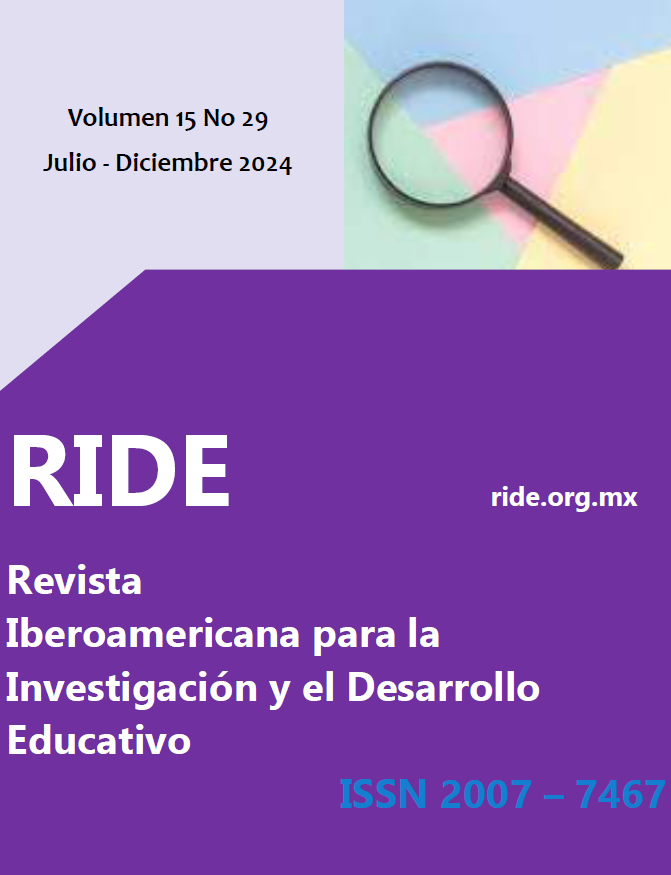Use of GeoGebra and representation registers in contextualized problems for learning systems of 2x2 linear equations
Abstract
Mathematical concepts are not real objects and different representations must be used to promote learning. The use of GeoGebra to develop mathematical knowledge is recognized in numerous investigations, which raise the need to design situations that allow exploration, formulation of conjectures, argumentation and evaluation of them. The research was qualitative because it was interested in knowing the development of knowledge of 25 students, from a group of the second semester of the evening shift of a General Baccalaureate by Competencies, around the resolution of verbal statement problems, and their algebraic and graphic representation. that gave rise to systems of 2x2 linear equations. The research literature is composed by Duval's theory of Semiotic Representation Registers. The analysis of the results shows that the context used, the use of different representations and the dynamic nature of the software were important for students to give meaning to concepts such as linear equation, unknown, variable, function, SEL and, therefore, solve the systems of 2x2 linear equations that underlay the problems.
Downloads
References
Avecilla, F. B., Cárdenas, O. B., Barahona, B. V. y Ponce, B. H. (2015). GeoGebra para la enseñanza de la matemática y su incidencia en el rendimiento académico estudiantil. Revista Tecnológica-ESPOL, 28(5), 121-132
Duval, R. (1996). Quel cognitive retenir en Didactique des Mathématiques? Recherches en Didactique des Mathématiques, 16 (3), 349-382.
Duval, R. (2004). Los Problemas Fundamentales en el Aprendizaje de las Matemáticas y las Formas Superiores en el Desarrollo Cognitivo (M. Vega, Trad.). Cali, Colombia: Universidad del Valle, Instituto de Educación y Pedagogía, Grupo de Educación Matemática. (Trabajo original publicado en 1999).
Duval, R. (1999). Representation, vision and visualization: cognitive functions in mathematical thinking. Basic issues for learning. Psychology of Mathematics Education – North America, 21 (2), 3-26.
Duval, R. y Sáenz-Ludlow, A. (2016). Comprensión y aprendizaje en matemáticas: perspectivas semióticas seleccionadas (pp. 1-264). Universidad Distrital Francisco José de Caldas.
García López, X. J. (2022). Sistemas de ecuaciones lineales en el nivel medio superior: estudio de casos mediante modelos teóricos locales.
Hernández, C. (2013). Consideraciones para el uso del GeoGebra en ecuaciones, inecuaciones, sistemas y funciones. Números. Revista de Didáctica de las Matemáticas, 82, 115-129.
Hernández, R., Fernández, C. y Baptista, L. (2014). Metodología de la investigación. México: McGraw-Hill Education.
Jiménez García, J. G. y Jiménez Izquierdo, S. (2017). GeoGebra, una propuesta para innovar el proceso enseñanza-aprendizaje en matemáticas. Revista Electrónica sobre Tecnología, Educación y Sociedad, 4 (7).
Kieran, C. (2006). Research the Learning and Teaching of Algebra. En Gutiérrez, A. y Boero, P. (Eds.), Handbook of Research on the Psychology of Mathematics Education: Past, Present and Future (pp. 11-49). Sense Publishers. Rotterdam.
Martínez, F. y Sáez, S. M. (2014). Los sistemas de ecuaciones en el bachillerato. Números. Revista de Didáctica de las Matemáticas, 85, 41-48.
Oviedo, L. M. y Kanashiro, A. M. (2012). Los registros semióticos de representación en matemática. Revista Aula Universitaria, 1(13), 29-36.
Pérez, E. G. P., y Vargas, A. V. (2019). Secuencia didáctica para el aprendizaje de sistemas de ecuaciones lineales con GeoGebra. Revista electrónica AMIUTEM, 7(2), 88-97.
Prieto, J. L. (2016). GeoGebra en diferentes escenarios de actuación. Revista Electrónica Conocimiento Libre y Licenciamiento (CLIC), 7(14), 9-23.
Sánchez-Balarezo, R. W. y Borja-Andrade, A. M. (2022). Geogebra en el proceso de Enseñanza-Aprendizaje de las Matemáticas. Dominio de las Ciencias, 8(2), 33-52.
Segura, S. M. (2004). Sistemas de ecuaciones lineales: una secuencia didáctica. Revista Latinoamericana de Investigación en Matemática Educativa, RELIME, 7(1), 49-78.
Tamayo, Ó. E. (2006). Representaciones semióticas y evolución conceptual en la enseñanza de las ciencias y las matemáticas. Revista educación y pedagogía, 18, 37-49.
Torres, A. y Rodríguez, A. (2022). Representaciones semióticas y la resolución de ecuaciones lineales y sistemas de ecuaciones lineales con doble variable. Miradas y voces de la investigación educativa V. Innovación educativa con miradas a la justicia social. Aportes desde la investigación educativa. Currículum, saberes y prácticas, 76-103.
Vargas, V., y Guzmán, J. (2012). Valor pragmático y epistémico de técnicas en la resolución de problemas verbales algebraicos en ambiente de hoja de cálculo. Enseñanza de las ciencias, 30(3), 89-107.

This work is licensed under a Creative Commons Attribution 4.0 International License.
In order to promote the development and dissemination of research in education in Latin America, the Ibero-American Journal for Educational Research and Development (RIDE) adhered to the Budapest Open Access Initiative, which is why it is identified as a Open access publication. This means that any user can read the complete text of the articles, print them, download them, copy them, link them, distribute them and use the contents for other purposes. Creative Cummons licenses allow users to specify the rights to use an open access journal available on the Internet in such a way that users know the rules of publication. Authors who publish in this journal accept the following conditions: Authors they keep the author's rights and give the magazine the right of the first publication, with the work registered with the attribution license of Creative Commons, which allows third parties to use the published material whenever they mention the authorship of the work and the first publication in this The authors can make other independent and additional contractual agreements for the non-exclusive distribution of the version of the article published in this journal (eg, include it in an institutional repository or publish it in a book) as long as they clearly indicate that The work was published for the first time in this magazine. Authors are allowed and recommended to publish their work. low on the Internet (for example on institutional or personal pages) before and during the review and publication process, as it can lead to productive exchanges and to a greater and faster dissemination of the published work















